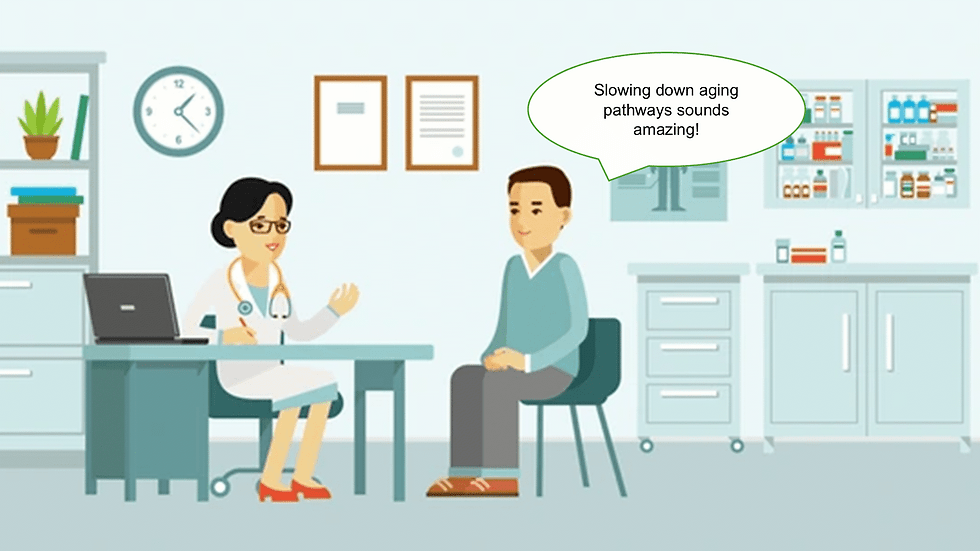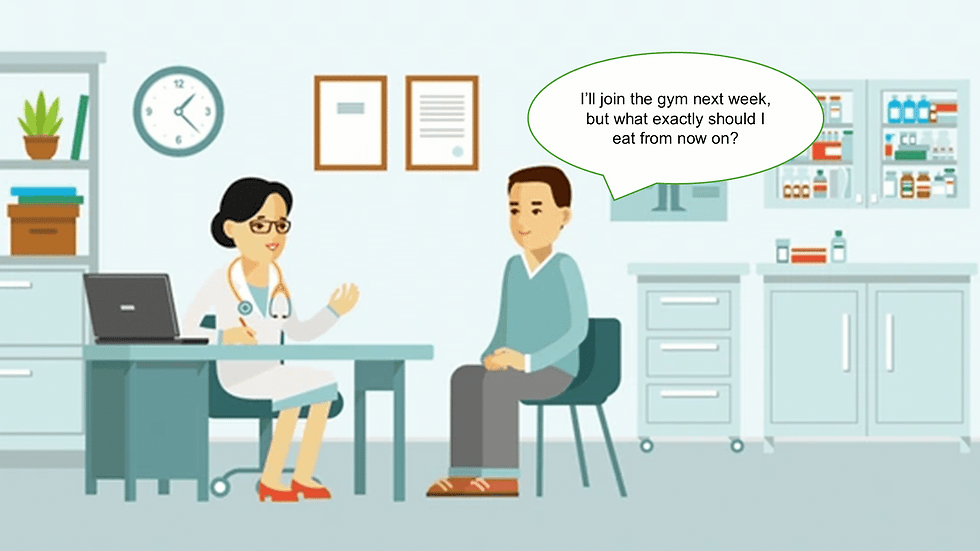
Sample Course: Benefits of Healthy Eating
Problem: Dr. Nicole is unable to review in-depth content on healthy eating during her 20 min patient appointments.
Role: Instructional designer from needs analysis to development
Target Audience: Dr. Nicole's patients
Tools Used: Rise 360, Mighty, Camtasia, PowerPoint, Unsplash, Canva
Completed: January 2025
Click the "Course here" button to view the sample Rise 360 course.
Sample description:
In 2024, Dr. Nicole in NYC read the book How Not to Age by Dr Michael Greger and knew she had to find a way to share the knowledge she had learned. The 20 min appointment with patients simply wasn’t enough time to cover what she had learned, so she hired an instructional designer to help share her key takeaways with her patients. The book contains many scientific studies and medical jargon that her patients (most without a medical background) would struggle to understand. She listed her favorite key takeways and how those could help patients add more nutritious meals to their routines.

"Aging Pathways" lesson GIF

"Common Diseases" lesson GIF

"Centenarian Food" lesson GIF

"Aging Pathways" lesson GIF
Design Process:
To help the doctor, a Rise course was developed for patients to access on her personal webpage. Following the ADDIE model, the doctor (Subject Matter Expert) shared her key takeaways from Dr. Greger’s book and the designer divided these into three main ideas for the course: aging pathways, common diseases, and centenarian diets.
Rise was chosen as the authoring tool for this course due to the amount of information presented, and its adaptability to screen size (Ex: mobile, tablet, etc). This way, patients could access the course from anywhere. The course begins with a short introduction and learning objectives written based on Bloom’s taxonomy. The course continues with a reflection box so that learners can share their current knowledge on the topic (prior knowledge - Gagne’s Nine events).
Keller’s ARCS model of motivation is used to engage the target audience which lacks a medical background. This gives the learning experience the “extra push” needed to motivate learners, bridging the gap between the learner’s knowledge on health, and complex medical terminology. Storytelling, reflection spaces, and tests across lessons assist in gaining the learners attention, providing relevance, encouraging confidence, and ensuring satisfaction.
As part of the design and development, each lesson within the course starts with an opening GIF-based scene of a patient at a doctor’s office to provide storytelling throughout the learning experience (gain attention - ARCS model). Even though videos are a great way to gains a learner's attention, it requires them to click to play as well as probably listening to audio. Dr. Nicole insisted in having a course that patients could complete as smoothly as possible. GIF creation provides a click-free and audio-less solution for engagement. Each lesson also includes a short knowledge test and/or reflection box to the end, supporting knowledge retention. Once the course was finalized and approved by the doctor, it was launched on her personal webpage for patients. Lastly, as part of the evaluation, a short survey would be sent out to patients who completed the course. This would measure their opinions on course effectiveness, quality of topics covered, and existing course gaps, if any.
Key Takeaways:
Based on the target audience, the course required design elements that minimized distractions (complex medical terminology), as well as provide accessibility for patients to complete. The patients can choose to complete the course from their work laptops, or a tablet or mobile at home. Video creation would have been considered if more course content was required. Overall, the course was designed to ensure engagement and a strong call to action. Patients will not only gain knowledge, but reflect on their current diets and plan to incorporate healthier lifestyle changes.
